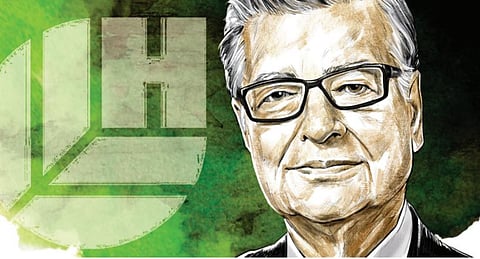

Over the last several months, I have commented on two sides of the leadership coin: first, shaping a good company into a business institution and second, transforming traditional organisations. I have received suggestions that I should illustrate the transformational efforts of Hindustan Lever and Tata by recounting their responses to the cataclysmic challenges presented by liberalisation in 1991. Since enough time has elapsed, the narrative could be instructive. I will attempt to present first Hindustan Lever (HLL), and, next month, Tata, by addressing three questions:
i) What went on inside the companies as liberalisation unfolded?
ii) What new degrees of freedom did the companies obtain from liberalisation?
iii) What were their dilemmas and how did they resolve them?
HLL and Tata are two storied business groups with over a century of existence through decades of colonialism, socialism, liberalisation and nationalism; they responded and renewed through this whole period. HLL was and is the most Indian multinational company and Tata the most multinational Indian business group.
HLL: In 1990, the new chairman, Susim Datta, inherited a strong company despite the preceding licence-permit raj. The vexatious issue of 51% foreign equity for Unilever under FERA had lasted through the 1970s and 1980s. It got resolved through the strenuous efforts of the two previous chairmen over a decade-long process of advocacy. Being a FERA company, HLL had not been allowed to increase its own production or source from third parties. Therefore, the company could not respond effectively to the detergent market share threat posed by Nirma since the early 1970s.
HLL grabbed the invitation of the Punjab government to buy into the equity of a sick, government-owned detergent company, Stepan Chemicals. Being outside the ambit of FERA, Stepan Chemicals was permitted to outsource products from third parties. What a circuitous route to enhance production capacity! To adapt to FERA, HLL had entered the chemicals and exports businesses, both of which had reasonably stabilised. But if there were to be liberalisation, these just-stabilised businesses would face fresh challenges.
Since the early 1980s, the winds of change wafted through government corridors. These winds did not develop into a strong gale because of political impediments. In 1990, it became obvious to Susim Datta that dramatic change was around the corner, though nobody knew what the change would be and how dramatic it would be.
For many decades, international business leaders had advocated liberal, free and consumer-driven markets as a panacea for Indian development. Their advocacy came alive with possibility in May 1991, when Prime Minister P V Narasimha Rao (industry portfolio), Dr Manmohan Singh (finance portfolio) and P Chidambaram (commerce portfolio) embarked on liberalising industry and trade. HLL was psychologically prepared for big change; however there was no clear company plan because the contours of the change were unknown.
Early during liberalisation, the company engaged Professor Sumantra Ghoshal of the London Business School to work with the leadership team. HLL developed alternative scenarios along with an aggressive vision: to double sales every four years and double profits-after-tax every three years. This was akin to a pilot aiming to break the sound barrier with no prior experience of a sonic boom—the pace of change would increase to a level that nobody had experienced before.
The six factories that had existed since the 1960s were sold or closed over time due to labour issues, product obsolescence or uncompetitive cost structures. Now, HLL could set up new capacities without the painful process of applying for industrial licences. Even before 1991, HLL had built a couple of new factories, thanks to a government policy for industrially backward areas of the country. Modern factories with new work practices were put up. Such a renewal of manufacturing could just not have been contemplated, let alone executed, during the licence-permit days.
Susim Datta later recounted, “I would like to believe that, although the initial problems were very large, in the end this dispersal of the manufacturing facilities helped the company—it certainly did during the years I was there. It was against this backdrop that HLL settled into a period of growth, an era of mergers and acquisitions, and a period when there was a lot of media attention on us.”
Another aspect that HLL had to completely reorient was consumer research. Due to global exposure through media, the consumer would change rapidly, her expectations would escalate sharply and competition would aggressively track these developments. The expenditure on consumer research was upped progressively. New techniques like Simulated Test Markets, Sequential Recycling and Qualitative Research were implemented.
HLL developed an enormous appetite for organic growth, something that industrial licencing had thwarted all these years. This aspect of the company did not fetch newspaper headlines but some of the biggest successes were achieved through organic growth. The company’s large detergents division led the charge by adopting a target of making and marketing 1 million tonnes by 1994. Before liberalisation, HLL’s detergent division was selling about 450,000 tonnes. This new ambition and drive to get growth to reach a million tonnes by 1994 was perceived as big, hairy, audacious and gutsy. HLL achieved this growth by organic means by building completely new factories and by backing chosen brands that included Wheel detergent bars.
In the next article, I will present the story of how Tata responded to liberalisation. Thereafter, I will interweave the responses of both companies.
R Gopalakrishnan, Best-selling author and corporate advisor (rgopal@themindworks.me)
(The author was Director of Tata Sons and Vice Chairman of Hindustan Unilever)